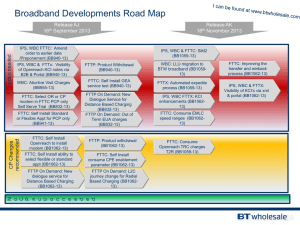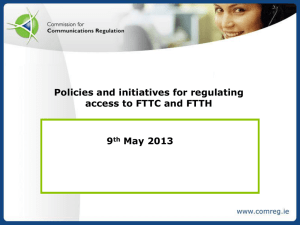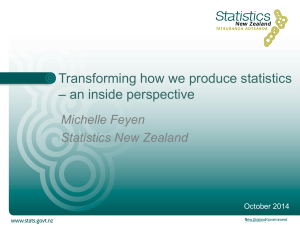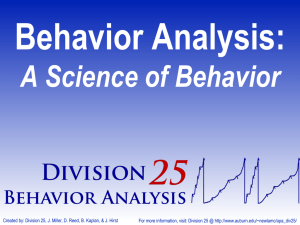MS Word Version
advertisement
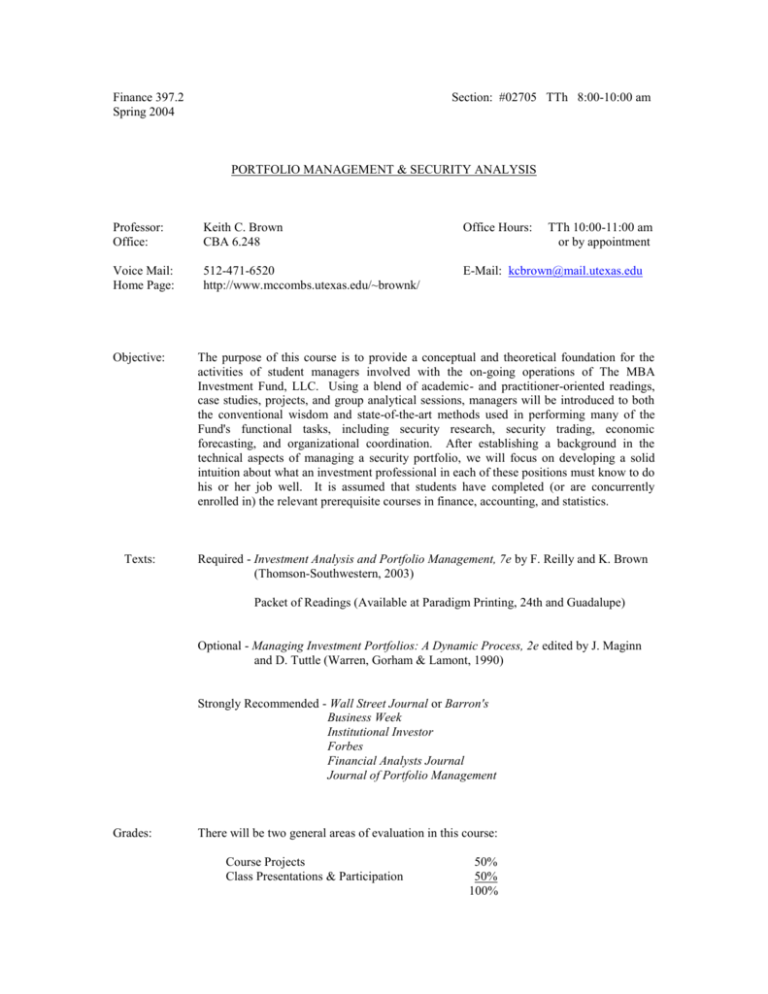
Finance 397.2 Spring 2004 Section: #02705 TTh 8:00-10:00 am PORTFOLIO MANAGEMENT & SECURITY ANALYSIS Professor: Office: Keith C. Brown CBA 6.248 Office Hours: TTh 10:00-11:00 am or by appointment Voice Mail: Home Page: 512-471-6520 http://www.mccombs.utexas.edu/~brownk/ E-Mail: kcbrown@mail.utexas.edu Objective: The purpose of this course is to provide a conceptual and theoretical foundation for the activities of student managers involved with the on-going operations of The MBA Investment Fund, LLC. Using a blend of academic- and practitioner-oriented readings, case studies, projects, and group analytical sessions, managers will be introduced to both the conventional wisdom and state-of-the-art methods used in performing many of the Fund's functional tasks, including security research, security trading, economic forecasting, and organizational coordination. After establishing a background in the technical aspects of managing a security portfolio, we will focus on developing a solid intuition about what an investment professional in each of these positions must know to do his or her job well. It is assumed that students have completed (or are concurrently enrolled in) the relevant prerequisite courses in finance, accounting, and statistics. Texts: Required - Investment Analysis and Portfolio Management, 7e by F. Reilly and K. Brown (Thomson-Southwestern, 2003) Packet of Readings (Available at Paradigm Printing, 24th and Guadalupe) Optional - Managing Investment Portfolios: A Dynamic Process, 2e edited by J. Maginn and D. Tuttle (Warren, Gorham & Lamont, 1990) Strongly Recommended - Wall Street Journal or Barron's Business Week Institutional Investor Forbes Financial Analysts Journal Journal of Portfolio Management Grades: There will be two general areas of evaluation in this course: Course Projects Class Presentations & Participation 50% 50% 100% There will be three formal assignments spread throughout the course, two of which will be done on an individual basis and one on a group basis. The first of the projects will involve the investment analysis of a publicly traded company. The other assignments will involve additional aspects of the investment management process and will be distributed during the semester. As indicated on the Daily Class Schedule, the Morning Meeting sessions will comprise roughly one-third of the class meetings. These will be the only formal presentations that managers will make during the semester, as well as the best opportunity for non-presenting managers to participate in the general discussion. Each manager in a presenting group will be assigned an individual grade based on the quality of their preparation and the effectiveness of his or her communication skills. A separate grade will also be assigned to the entire group for the effectiveness of the overall presentation. For every manager in a given group, these scores will then be averaged across the two presentations to create an overall presentation grade for the semester. Procedures: As a rule, class will meet almost every Tuesday and Thursday of the semester. However, there will be a few exceptions. A special class (i.e., field trip) will be held in Houston on Friday, January 23 from approximately 8:00 am - 8:00 pm. In recognition of this commitment, there will no class meeting on April 15. The assigned classroom for our regular meetings is UTC 1.104, although we will frequently meet in the EDS Financial Trading and Technology Center (FTTC) classroom. The planned locations for each class session are listed on the Daily Class Schedule and will be posted on the course website. Other schedule and location changes may be announced as necessary. The reading list and class preparation for this course is lengthy and relatively ambitious. Student managers will be expected to have read the assigned material in sufficient depth to ask insightful questions during class, or make otherwise meaningful additions to the discussion. Also, as reflected by the Course Outline, preparation of solutions to the assigned end-of-chapter problems and case studies will be an important focus of this class. The discussions of the theoretical and conceptual material that will take place during our sessions are linked closely with these exercises and so it is vital that you consider them before each class meeting. You will be responsible for being prepared to discuss answers to all of the questions pertaining to a particular topic, even if some of the questions are not eventually covered in class. Performance during these sessions will contribute to the overall class participation grade. Policies: Enrollment in this course is restricted to the current set of student managers for The MBA Investment Fund. While this exclusivity creates a more convivial atmosphere than you will experience in most classes, it is important to keep in mind that there is a serious academic purpose to this course that is distinct from the day-to-day activities of the Fund. Accordingly, when evaluating the quality of your work and effort at the end of the semester, I will curve together the scores for the entire section to determine the final distribution. In each class, a full range of grades will be considered. In borderline situations, both class participation and your general effort throughout the semester will be determining factors. You should treat this course as you would any of your other Fund responsibilities; that is, missing a class session is comparable to missing a Fund business meeting. Whether present or not, you will be held responsible for everything covered or assigned in class. Further, your general conduct in class (including your attendance and promptness) will be a part of your class participation grade. Finally, accessing network resources during class (e.g., internet browsing, instant messaging) without explicit permission is forbidden and will not be tolerated. The course home page (which can be located by accessing the web address listed on the first page of this syllabus) will serve as an important mechanism for communicating course-related information. However, anything material to your class performance that is posted online will also be available through more traditional outlets (e.g., e-mail, class handouts), or by request. The website will contain electronic versions of many of the materials distributed in class as well as a file that specifies the required readings for the next session, when that information is relevant. These files will be updated—assuming there are no network problems—no later than 9:00 am on the morning before a class day. It will be assumed that all students in this course will act as if an Honor Code of Conduct is fully operational in the McCombs School of Business. Specifically, for those course projects that require you to work in a group, all members of the group are expected to contribute equally. Failure to do so may result in failure on the project. Finally, academic dishonesty (as defined by the Office of the Dean of Students) will not be tolerated and will be dealt with in the most severe manner possible. COURSE OUTLINE & READING LIST The following outline lists the topic coverage and reading requirements for the semester. The "Assignment" listings refer to either: (i) case studies, or (ii) the end-of-chapter problems that can be found in the Reilly and Brown's (RB) Investment Analysis and Portfolio Management textbook. For the RB assignments, the question and problem numbering system refers to the relevant chapter and question or problem (e.g., Problem Q1.2 refers to the second question in Chapter 1, P2.3 refers to the third problem in Chapter 2. Finally, note that most of the non-textbook readings and case studies can be found in the course reading packet; those marked with an asterisk (*) will be distributed before class. Class #1: Tuesday, January 20 (FTTC Classroom) Topic: Investment Fundamentals & Equity Analysis I: Measuring Risk and Expected Return Reading: RB Chapter 1 (pp. 16-27) Chapter 8 (pp. 247-271) Chapter 9 R. Arnott and P. Bernstein, “What Risk Premium is ‘Normal’?,” Financial Analysts Journal, March-April 2002 - * Assignment: RB P9.6, P9.7 (Note: You can download an Excel spreadsheet from the class website with the data for these problems) Class #2: Thursday, January 22 (FTTC Classroom) Topic: Equity Analysis II: Discounted Cash Flow (DCF) Models: Theory & Application Reading: RB Chapter 11 (pp. 368-388, 393-402) Chapter 13 (pp. 436-449) A. Damodoran, “Value Creation and Enhancement: Back to the Future,” Contemporary Finance Digest, Winter 1998 Assignment: RB Q15.27, P15.11 (Note: These problems do not require reading Chapter 15) Class #3: Friday, January 23 Topic: Houston Field Trip (Fayez Sarofim, Goldman Sachs, AIM Capital Management) Reading & Assignment: None Class #4: Tuesday, January 27 (FTTC Classroom) Topic: Equity Analysis III: Relative Valuation Techniques & Earnings Forecast Models Reading: RB Chapter 11 (pp. 388-393) Chapter 15 (pp. 549-565) E. Lie and H. Lie, “Multiples Used to Estimate Corporate Value,” Financial Analysts Journal, March-April 2002 B. Cornell and W. Landsman, “Accounting Valuation: Is Earnings Quality an Issue?,” Financial Analysts Journal, November/December 2003 Assignment: RB P15.13, P15.14, P15.26 Class #5: Thursday, January 29 (FTTC Classroom) Topic: Equity Analysis IV: Industry Analysis & Company Analysis Reading: RB Chapter 14 (pp. 486-524) Chapter 15 (pp. 540-549, 565-588, 597-600) H. Desai, B. Liang, and A. Singh, “Do All-Stars Shine? Evaluation of Analyst Recommendations,” Financial Analysts Journal, May-June 2000 Assignment: RB P14.8 Case Study: Merck & Co. - * Class #6: Tuesday, February 3 (FTTC Classroom) Topic: Equity Analysis V: Equity Portfolio Strategies & Private Company Valuation Reading: RB Chapter 17 (pp. 652-678) C. Capaul, I. Rowley, and W. Sharpe, "International Value and Growth Stock Returns," Financial Analysts Journal, January-February 1993 D. Kao and R. Shumaker, "Equity Style Timing," Financial Analysts Journal, January-February 1999 Assignment: RB P17.5 Case Study: Mirth Press Class #7: Thursday, February 5 (FTTC Classroom) Topic: Security Markets & Trading Reading: RB Chapter 4 (pp. 105-108, 111-136) W. Wagner and M. Edwards, "Best Execution," Financial Analysts Journal, January-February 1993 A. Madhavan, "Market Microstructure: A Practitioner’s Guide," Financial Analysts Journal, September-October 2002 Assignment: None Class #8: Tuesday, February 10 (FTTC Classroom) Topic: Performance Measurement I: Peer Comparisons & Risk-Adjusted Techniques Reading: RB Chapter 26 (pp. 1106-1130) T. Goodwin, “The Information Ratio,” Financial Analysts Journal, July-August 1998 Assignment: RB P26.5 Class #9: Thursday, February 12 (FTTC Classroom) Topic: Performance Measurement II: Risk Decomposition & Attribution Analysis Reading: RB Chapter 26 (pp. 1130-1140, 1147-1152) J. Bogle, “The Implications of Style Analysis for Mutual Fund Performance Evaluation,” Journal of Portfolio Management, Summer 1998 J. Davis, "Mutual Fund Performance and Manager Style," Financial Analysts Journal, JanuaryFebruary 2001 Assignment: RB P26.9, P26.10 Class #10: Tuesday, February 17 (FTTC Classroom) Topic: Morning Meeting – Group #1 Reading & Assignment: None Class #11: Thursday, February 19 (FTTC Classroom) Topic: Morning Meeting – Group #2 Reading & Assignment: None Class #12: Tuesday, February 24 (FTTC Classroom) Topic: Morning Meeting – Group #3 Reading & Assignment: None Class #13: Thursday, February 26 (FTTC Classroom) Topic: Morning Meeting – Group #4 Reading & Assignment: None Class #14: Tuesday, March 30 (FTTC Classroom) Topic: Fixed-Income Analysis I: Fundamentals, Yield Curve Analysis, and Valuation Reading: RB Chapter 18 Chapter 19 (pp. 730-764) Assignment: RB Q19.5, P19.2, P19.13, P19.15 Class #15: Thursday, April 1 (FTTC Classroom) Topic: Fixed-Income Analysis II: Analytical Techniques Reading: RB Chapter 10 (pp. 312-350) Chapter 19 (pp. 764-792) M. Kritzman, "What Practitioners Need to Know about Duration and Convexity," Financial Analysts Journal, September-October 1992 Assignment: RB Q19.8, P19.7, P19.10, P19.18 Class #16: Tuesday, April 6 (FTTC Classroom) Topic: Fixed-Income Analysis III: Portfolio Management Strategies Reading: RB Chapter 20 (pp. 808-840) K. Brown, “An Overview of Fixed-Income Portfolio Management Strategies” Lecture Notes, 2004 - * Assignment: RB Q20.15, P20.12, P20.13 Case Study: Greydanus, Boeckh & Associates Class #17: Thursday, April 8 (FTTC Classroom) Topic: Portfolio Optimization & Asset Allocation Reading: RB Chapter 7 Chapter 17 (pp. 678-685) K. Brown, “A Brief Review of the Portfolio Formation Process,” Lecture Notes, 2004 - * V. Harlow, “Asset Allocation in a Downside-Risk Framework," Financial Analysts Journal, September-October 1991 P. Jorion, “Portfolio Optimization with Tracking Error Constraints," Financial Analysts Journal, September-October 2003 Assignment: RB P7.5, P17.8, P17.10 Class #18: Tuesday, April 13 (FTTC Classroom) Topic: Morning Meeting – Group #1 Reading & Assignment: None Class #19: Tuesday, April 20 (FTTC Classroom) Topic: Morning Meeting – Group #2 Reading & Assignment: None Class #20: Thursday, April 22 (FTTC Classroom) Topic: Capital Market Foundations & Economic Forecasts Reading: RB Chapter 12 (pp. 407-422) A. Cohen, "Economic Forecasts and the Asset Allocation Decision," from Economic Analysis for Investment Professionals (K. Sherrerd, ed.), Association for Investment Management and Research, 1997 B. Singer and K. Terhaar, "Economic Foundations of Capital Market Returns," Research Foundation of the Institute of Chartered Financial Analysts, 1997 - * R. Arnott and A. Casscells, “Demographics and Capital Market Returns,” Financial Analysts Journal, March-April 2003 Assignment: P12.2 Class #21: Tuesday, April 27 (FTTC Classroom) Topic: Morning Meeting – Group #3 Reading & Assignment: None Class #22: Thursday, April 29 (FTTC Classroom) Topic: Behavioral Finance: Theory & Practice Reading: M. Grinblatt, S. Titman, and R. Wermers, “Momentum Investment Strategies, Portfolio Performance, and Herding: A Study of Mutual Fund Behavior,” American Economic Review, December 1995 D. Hilton, "The Psychology of Financial Decision-Making: Applications to Trading, Dealing, and Investment Analysis," Journal of Psychology and Financial Markets, 2001 H. Shefrin and M. Statman, "The Disposition to Sell Winners Too Early and Ride Losers Too Long: Theory and Evidence," Journal of Finance, July 1985 R. Shiller, “Bubbles, Human Judgment, and Expert Opinion,” Financial Analysts Journal, MayJune 2002 Assignment: Q17.8, Q17.9 Class #23: Tuesday, May 4 (FTTC Classroom) Topic: Morning Meeting – Group #4 Reading & Assignment: None Class #24: Thursday, May 6 (FTTC Classroom) Topic: Organizational Structure in the Money Management Industry Reading: RB Chapter 25 (pp. 1066-1084, 1092-1094) G. Brinson, "Organizational Culture," from Managing Investment Firms: People and Culture (J. Squires, ed.), Association for Investment Management and Research, 1997 P. Bernstein, “Points of Inflection: Investment Management Tomorrow,” Financial Analysts Journal, July-August 2003 Assignment: Case Study: Grantham, Mayo, Van Otterloo & Co THIS OUTLINE IS TENTATIVE AND SUBJECT TO CHANGE UPON PROPER NOTIFICATION.
